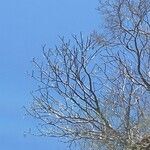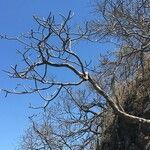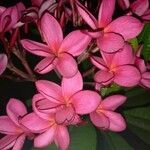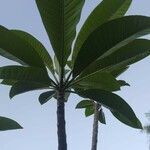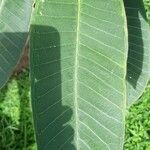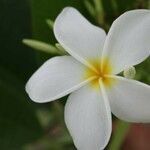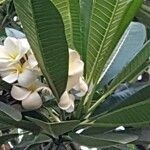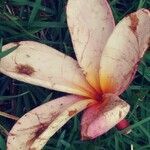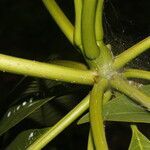A deciduous shrub or small tree. It grows 2-8 m tall. It has an irregular shape. The leaves fall off during the year. The leaves grow in spirals at the tips of the branches. They are smooth and broadly sword shaped and taper to both ends. The veins are distinct and straight. The flowers are red, yellow or pink. They occur in upright clusters at the tips of branches. They have a scent. The fruit are pods. They occur in pairs. They are 12-30 cm long. The seeds have wings.
Trees to 8 m tall. Bark pale green, smooth, thin. Petiole to 7 cm; leaf blade elliptic to very narrowly so, 14-30 X 6-8 cm, glaucous adaxially, apex acute or acuminate; lateral veins 30-40 pairs, slightly elevated abaxially. Corolla tinged with pink or purple at least outside, 4-6 cm in diam.; lobes pink, yellow, or white, with a yellow base, 3-4.5 X 1.5-2.5 cm, obliquely spreading. Follicles oblong, 11-25 X 2-3 cm. Fl. Mar-Sep, fr. Jun-Dec. 2n = 36.
Small trees; corolla tube narrow; anthers without long bristly appendages. Leaves obovate or elliptic, > 2 cm wide. Leaf blade acute or acuminate at apex, glaucous, dull above
Shrub or small tree from the Americas, to 9 m, much branched.. Flowers white, yellow, pink or red.
